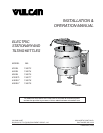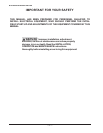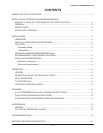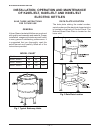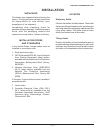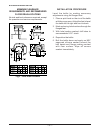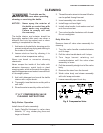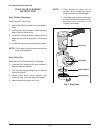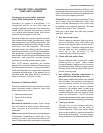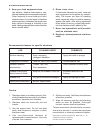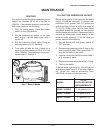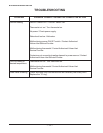
— 12 —
ELECTRIC STATIONARY KETTLES
Recommended cleaners for specific situations
JOB CLEANING AGENT COMMENTS
Routine cleaning Soap, ammonia, Apply with cloth or sponge
detergent, Medallion
Fingerprints & smears Arcal 20, Lac-O-Nu Ecoshine Provides barrier film
Stubborn stains & Cameo, Talc, Zud, Rub in direction of polish lines
discoloration First Impression
Grease & fatty acids, Easy-off, De-Grease It Oven Aid Excellent removal on all
blood, burnt-on-foods finishes
Grease & oil Any good commercial detergent Apply with sponge or cloth
Restoration/Passivation Benefit, Super Sheen
Review
1. Stainless steels rust when passivity (film-
shield) breaks down as a result of scrapes,
scratches, deposits and chlorides.
2 Stainless steel rust starts with pits and
cracks.
3. Use the proper tools. Do not use steel
pads, wire brushes or scrapers to clean
stainless steel.
4. Use non-chlorinated cleaners at
recommended concentrations. Use only
chloride- free cleaners.
5. Soften your water. Use filters and softeners
whenever possible.
6. Wipe off cleaning agent(s) and standing
water as soon as possible. Prolonged
contact causes eventual problems.
To learn more about chloride-stress corrosion
and how to prevent it, contact the equipment
manufacturer or cleaning materials supplier.
Developed by Packer Engineering, Naperville, Ill., an
independent testing laboratory.
Provided courtesy of NAFEM.
5. Keep your food equipment clean.
Use alkaline, alkaline chlorinated or non-
chloride cleaners at recommended strength.
Clean frequently to avoid build-up of hard,
stubborn stains. If you boil water in stainless
steel equipment, remember the single most
likely cause of damage is chlorides in the
water. Heating cleaners that contain chlorides
have a similar effect.
6. Rinse, rinse, rinse.
If chlorinated cleaners are used, rinse and
wipe equipment and supplies dry immedi-
ately. The sooner you wipe off standing
water, especially when it contains cleaning
agents, the better. After wiping equipment
down, allow it to air dry; oxygen helps main-
tain the stainless steel’s passivity film.
7. Never use hydrochloric acid (muriatic
acid) on stainless steel.
8. Regularly restore/passivate stainless
steel.



